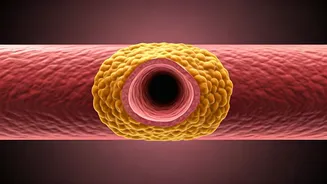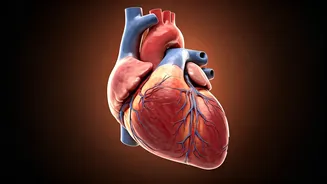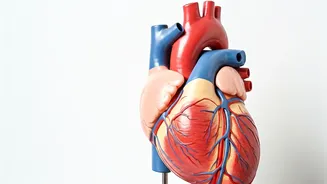The Retinal Heart Link
The relationship between eye health and heart health has been the subject of ongoing scientific inquiry. The focus here is on the retina, the light-sensitive
tissue at the back of the eye. Blood vessels in the retina are remarkably similar to those in the heart, in terms of size and structure. This shared feature opens a pathway for understanding heart conditions through eye examinations. Changes in retinal blood vessels, such as narrowing, widening, or damage, can sometimes indicate broader issues in the cardiovascular system. Consequently, ophthalmologists can sometimes identify potential heart disease risk factors by analyzing retinal images. The ability to visualize these blood vessels non-invasively makes eye scans a convenient and informative tool in the early detection of cardiovascular disease. The retina's accessibility and its mirroring of the heart's vasculature make it a critical focal point for health assessments. It provides a unique window into the overall health of the circulatory system.
What Study Found?
Recent studies have explored the correlation between retinal features and heart disease risk. Researchers have scrutinized the various aspects of the retina, including the diameter of blood vessels, signs of damage, and the presence of any abnormalities. These analyses aim to identify any patterns indicative of underlying heart problems. One key finding is that changes in retinal blood vessel diameter can suggest the existence of high blood pressure or other cardiovascular issues. Narrowing of these vessels might hint at a reduced blood supply to the heart, potentially increasing the risk of heart attacks. Also, the presence of retinal hemorrhages or other signs of vascular damage could indicate conditions like atherosclerosis, where plaque builds up inside the arteries. The studies often involved comparisons between groups of people with and without known heart conditions. It provided valuable insights into the retinal characteristics that might serve as early warning signs. By studying these retinal features, the researchers hope to build more effective tools for assessing cardiovascular health.
What This Means?
The findings from the research have important implications for both individuals and the medical community. Eye scans could become a routine component of health check-ups. Instead of waiting for more invasive and expensive heart examinations, individuals at risk could benefit from early warnings derived from their eye exams. Early detection is crucial because it allows doctors to take preventive actions and begin treatments sooner. The fact that the process is non-invasive is a great advantage. It means people can easily undergo retinal scans without discomfort or extended recovery periods. The identification of potential cardiovascular problems through eye examinations could also assist in prioritizing patients for further testing and treatment. This could significantly enhance how efficiently healthcare resources are utilized. Moreover, these findings highlight the significance of comprehensive health evaluations that consider the interconnectedness of various bodily systems. Recognizing that the eyes offer valuable clues regarding overall well-being stresses the need for integrated healthcare approaches.
What You Can Do?
The knowledge derived from the eye-heart link empowers individuals to take proactive measures to safeguard their cardiovascular health. One important step involves regular eye examinations, particularly for those with risk factors like a family history of heart disease, high blood pressure, or diabetes. These eye examinations, when integrated into routine health check-ups, can play a pivotal role in early detection. Aside from this, adopting a heart-healthy lifestyle is equally crucial. This entails maintaining a balanced diet, incorporating regular physical activity, and avoiding smoking and excessive alcohol consumption. Regular exercise helps control blood pressure and improves the overall condition of the cardiovascular system. Following a well-rounded diet that is low in saturated fats and rich in fruits, vegetables, and whole grains is also essential. Moreover, managing any existing health conditions, such as diabetes and high blood pressure, with the support of healthcare professionals, is critical for reducing the risk of cardiovascular problems. Lastly, staying informed about the latest health findings and regularly consulting with healthcare providers ensures optimal well-being.
Who Benefits Most?
Several groups can benefit particularly from the insights regarding the retinal-heart link. Anyone with a family history of heart disease should be more attentive to their cardiovascular health. Early detection is particularly beneficial for this group, as it enables proactive prevention strategies. Also, individuals with existing risk factors, such as high blood pressure, high cholesterol, or diabetes, can gain significantly. Regular eye examinations provide a non-invasive way to monitor their condition. The elderly population also stands to benefit. As people age, the risk of cardiovascular disease tends to increase. Integrating eye exams into routine check-ups allows for early warnings and allows for timely interventions. Lastly, anyone concerned about their overall health and well-being should consider retinal scans as a proactive measure. These scans can be a valuable addition to standard health evaluations, contributing to overall well-being. By focusing on preventive health measures, it is possible to enhance cardiovascular health and overall quality of life.











